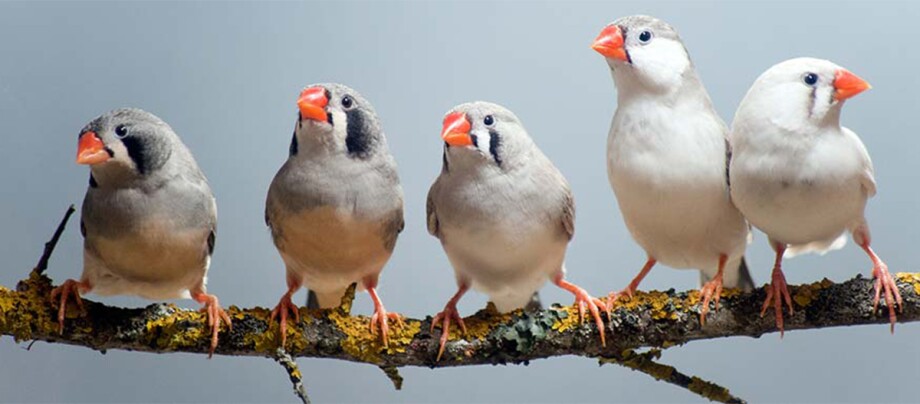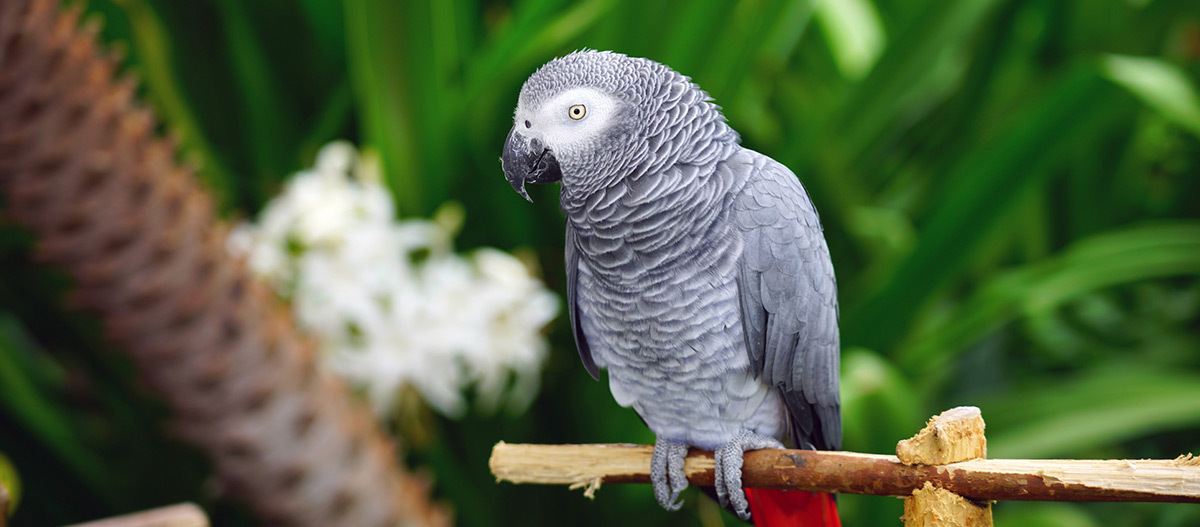Interesting facts about exotic birds - the different races and how to keep them
13.02.2023 - Reading time: 4 minutes

Parakeets, canaries, estrildid finches or parrots: Each race has its own individual needs, but the general rule of thumb is: they need companions of their own species and must never be kept on their own. Apart from that they are very low maintenance pets. When kept properly, canaries and budgies can live to be up to 15 years old, cockatiels even 20 years old. Parrots can live even longer, according to the species. To ensure they enjoy a long and happy life, a large cage, daily free flight, proper hygiene and healthy food are imperative.
What races of exotic bird are there?
Budgerigars (Melopsittacus undulatu)
Canaries (Serinus canaria forma domestica)
Zebra finches (Taeniopygia guttata castanotis)
Lovebirds (Agapornis)
Cockatiels (Nymphicus hollandicus)
Amazon parrots (Amazona) and grey parrots (Psittacus erithacus)

What accessories do you need?
Accessories for your birds:
-
• Stainless steel drinking troughs and food bowls that are fillable from outside the cage
• Perches of different thicknesses, amongst others, there should be perches made of natural branches and perches with freely swinging ends – to stimulate the bird’s muscles in different ways
• Swings made of wood and cork, thick, bendy cotton or leather ropes
• Bells, colourful chains, without any detachable small parts, painted with non-toxic paint
• Birdbath
• Seed mix suitable for your species of bird
• Mineral blocks to nibble on
• Shell grit – birds need this to grind up the seed in their stomachs. Always offer this in a separate bowl
• Bird sand (not as complete litter), can be offered in a separate bowl – to bathe in and pick at
• Natural snacks such as foxtail millet or linseed – for training and rewarding
• Litter suitable for birds, e.g. MultiFit Beach Wood Chips
What do exotic birds eat?
In specialist pet stores you can buy food that is individually suited to each type of bird, made up of millet and seeds. Only buy small amounts, then food that is kept for too long can develop poisonous mould. Moderate feeding is important, budgies for example can become overweight very quickly. Foxtail millet is to be handled as a sweet treat and should therefore not be given daily, nor in large quantities. Fresh food is well accepted and supplies the birds with liquid alongside their daily fresh water supply, and keeps them occupied for a while.
Fresh food should really always be fresh – best organically grown and pesticide-free. This encompasses all types of salad, but also carrots, gherkins, courgettes, tomatoes, peppers, chard and fresh spinach. It also includes fresh herbs such as parsley, basil, wild garlic, cress or dill. Untreated apple tree, pear tree, hazelnut, beach or birch tree twigs are a true treat for exotic birds, who enjoy nibbling on them. Fruit such as berries, apples or pears are well loved because of their sweetness but due to the high sugar content they should only be give once or twice a week.
Feeding and entertainment
In the wild, the birds are permanently on the wing, searching for food. This makes their diet varied and they use energy at the same time, In captivity, they get seed mix served in a bowl and don’t have to exert themselves for it at all. Boredom and excess weight are inevitable. Especially parakeets and parrots are good at combining feeding with entertainment. For example you can purchase willow spheres that you can fill or dress with food. Another possibility is to place the food in different areas of the room or aviary, for example in a cork pipe or hung on climbing ropes – this exercises the bird’s mind, muscles and beak. Important is that the food is rationed.
Why is flight so important?
Flying keeps the bird’s muscles strong and helps them stay slim. Their sensitive respiratory system is also strengthened and grave illnesses such as fungal infections in the bird’s air sacs are prevented. One hour indoor free flight is the absolute minimum. Indoor free flight is also extremely interesting for these curious animals. Their curiosity however, can bring injuries with it. Make sure you are present in the room during periods of free flight and remove any possible sources of danger.

What dangers are lurking for birds in the house?
All doors and windows must be closed during periods of free flight. A curtain drawn in front of an open window is not a sufficient safety precaution. A naked window pane can also present a danger as the bird may not see it and fly against it. Shelves and sofas are best stood directly against a wall so that their is no crack between the wall and piece of furniture for the bird to get trapped in. Vases and other containers with large necks as well as open aquariums should be covered. Standing lamps and uplights should be turned off about an hour before free flight as they can be very hot. Should a bird land on one, it could cause terrible burns. Candles, pots, plates and cups with hot contents should not be present in the room. The kitchen should be a no-go-area for your birds.